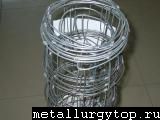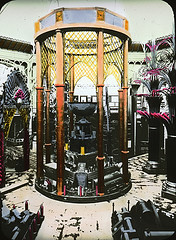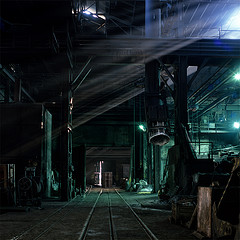В Ижевске пройдет выставка "Машиностроение. Металлургия. Мет
 Совсем скоро открываются крупные промышленные выставки Ижевска – «Нефть. Газ. Химия„ и ‹Машиностроение. Металлургия. Металлообработка›. С 19 по 22 октября в ФОЦ “Здоровье» будут представлены технологии и оборудование из 16 стран мира: Австрии, Великобритании, Германии, Израиля, Италии, Китая, Кореи, Нидерландов, России, США, Тайвани, Турции, Финляндии, Чехии, Швейцарии, Японии. В выставках примут участие более 80 предприятий из Удмуртии и 14 регионов России.
Совсем скоро открываются крупные промышленные выставки Ижевска – «Нефть. Газ. Химия„ и ‹Машиностроение. Металлургия. Металлообработка›. С 19 по 22 октября в ФОЦ “Здоровье» будут представлены технологии и оборудование из 16 стран мира: Австрии, Великобритании, Германии, Израиля, Италии, Китая, Кореи, Нидерландов, России, США, Тайвани, Турции, Финляндии, Чехии, Швейцарии, Японии. В выставках примут участие более 80 предприятий из Удмуртии и 14 регионов России.
В числе предприятий, готовых продемонстрировать имеющиеся новинки, можно выделить:
– ООО "ЭЛЕМЕР–Пермь" (г. Пермь) предложит средства и системы для измерения, контроля и регулирования температуры, давления, влажности и прочих параметров. Это механизмы электрические однооборотные (МЭО, МЭОФ), электроконтактные манометры (ЭКМ–2005), пирометры для бесконтактного измерения температуры тел на расстоянии от 1 до 30 метров.
– ООО Точная механическая обработка" (г. Санкт–Петербург), специализирующееся на механообработке металла с применением станков c ЧПУ, представит образцы сложных корпусных деталей из металла.
– ООО «Завод нефтегазового оборудования "ТЕХНОВЕК» (г. Воткинск), помимо традиционного оборудования для обвязки устья нефтяных и газовых скважин, впервые презентует лепестковую задвижку общепромышленного назначения.
– Дебютной продукцией на выставках ЗАО НПО «МКМ» (г. Ижевск) станет новая версия уникального для литейной отрасли программного продукта LVMFlowCV. Среди преимуществ системы 3 D моделирования тепловых и гидродинамических процессов литья: совместимость с платформой Windows и применимость к широкому спектру литейных технологий.
По вопросам участия в выставках обращайтесь в оргкомитет по телефонам: (3412) 733–664, 733–591, 733–532. Подробная информация на сайтах www.metal.vcudmurtia.ru, www.neft.vcudmurtia.ru
Об этом сообщает деловой партнер выставки «Нефть. Газ. Химия» – ОАО «Удмуртнефть».





Ninja Swords - Special Swords for Japanese
 What makes the ninja sword so desired to captivate the imagination. Perhaps it is the rugged and practical beauty of this ninja sword. Straight in it's lines, practical in it's appearance, the ninja sword is a beautiful weapon that when displayed, brings to a room a sense of mystery. Used on occasion by the ninja, the ninja sword was used for unique roles in a war. The ninja were the special–forces of the Japanese army or of a king. Trained for the utmost stealth, they were the assassins, the saboteurs; the scouts. As such long unwieldy swords were of little use to the ninja. The ninja sword was designed for quick draws from the sheath to overcome an opponent with a longer sword. This crucial moment was enough to have the edge and give the ninja victory in close combat.
What makes the ninja sword so desired to captivate the imagination. Perhaps it is the rugged and practical beauty of this ninja sword. Straight in it's lines, practical in it's appearance, the ninja sword is a beautiful weapon that when displayed, brings to a room a sense of mystery. Used on occasion by the ninja, the ninja sword was used for unique roles in a war. The ninja were the special–forces of the Japanese army or of a king. Trained for the utmost stealth, they were the assassins, the saboteurs; the scouts. As such long unwieldy swords were of little use to the ninja. The ninja sword was designed for quick draws from the sheath to overcome an opponent with a longer sword. This crucial moment was enough to have the edge and give the ninja victory in close combat.
The ninja sword is a bright short blade, with a long handle, and tended to have a straighter edge than the more popular katana. There were two reasons for these differences. The first as has already been mentioned was the ability for the quick attack, aided by the long handle, which helped give the impression that the blade was longer than it actually was. The combination of a short blade and long deceiving handle allowed the ninja to use the ninja sword in quick strike situations. Second the handle was longer to give a sense that the blade was longer. The blade was laso elongated to be able to use the blade in situations that required traversing an object such as a wall, much like a pole–vaulter.
The ninja sword is a weapon of quiet elegance and purposed practicality. It's intended use from ages long past, have made this a weapon that emanates the strength and grace of the ninja. The ninja sword is beautiful and truly an object that is not merely an object but an invitation to feel the sense of history and honor from whence this sword was used. One must see this truly remarkable object to appreciate it's graceful lines, and defined shape. Display this particular blade as part of a collection, or a single eye–catching object that draws the attention of all who enter into a room.





Discussion of Swords in Japanese History
 The oldest swords on record in Japan were sent to a queen from China in roughly 250a.d. At this period a great number of the swords came from China made of Iron. Along about the 5th century is when steel swords were finally created.
The oldest swords on record in Japan were sent to a queen from China in roughly 250a.d. At this period a great number of the swords came from China made of Iron. Along about the 5th century is when steel swords were finally created.
The technology to create steel from Iron involves carbon material during the smelting process. It is this additional material that creates an iron alloy or – steel. This alloy then allows the metal to be harder (addition of carbon), but not so hard that it becomes brittle, and will therefore still maintain its' malleability from the Iron. The hardness is required to hold an edge during the sharpening process, while the iron softness allows the blade to withstand metal to metal contact during battle situations without shattering the blade as would happen with extremely rigid metal.
In the beginning Japanese swords were straight. A straight blade was very common and practical for the foot soldier. Once the calvary was introduced and fighting on horseback became an effective way to wage a war between about 800 – 1200ad, curved swords became common and the sword of practical choice. These initial long curved swords were called Tachi. Future swords were given different names and these names were given primarily due to the length of curvature of the sword. Nevertheless, Japanese swords have always typically been made with a single sharpened edge, however in the beginning of the sword making process, their did exist double–edged swords.
After 1200ad the Minomoto clan had defeated the enemy clan and came into power. It was about this time that the Samurai class came to prominence. The capitol setup by the ruling clan became a magnet for swordsmiths from all over the country, and swords making came into a greater prominence.
In 1274 and 1281 the Mongol invasions caused the future modifications of the swords being built due to the tips breaking. This kind of damage was not reparable and therefore caused changes in the way swords were made.
Then in 1334 a battle between the North and the South began between emperors Godaiko and Komyo. This struggle for power continued for several a centuries. During this time however, the need for swords increased and as often happens the sword making became a manufacturing process rather than a quality process and so the sword quality suffered. It was also during this time that the foot soldier was the primary source of military power, which caused the need for shorter swords which became the Katana. These shorter swords were easier to maneuver in hand–to–hand combat and were more in line with the combat tactics of the time.
In the mid 1500s the gun was introduced by the Portuguese and thereby changed the face of warfare forever. Obu Nabunaga used these new weapons in a decisive battle that utterly destroyed a clan known for their skill and bravery. Although these new guns were not as accurate, they were certainly effective. The battle field now belonged to groups of men armed with guns. Accordingly, the armor changed to accomadate this new weapon and became heavy to protect from the bullets. Swords were still used at that time and so these too also needed to be modified. The swords in this era became longer and heavier to slash through the thick armor.
The long centuries of war came to an end. The country was now unified under the authority of Toyotomi Hideyoshi who adopted a feudal system. Since a relative peace had been established, the Samurai class found themselves in a state of proverbial limbo – there was no war to fight. And so the Samurai warrior schools were setup to teach new recruits the ways of the Samurai and maintain the ability to fight. There were many schools at this time.
In 1868, emperor Meji took control and the period of modernization began up until the present day. This new system denied the rights of the Samurai among the most notable were the priviledge of wearing the daisho – the two sword combination typically worn to distinguish the Samurai class. During these times, the ability and knowledge to make Samurai swords was nearly lost, but recovered in the early 50's. Today the art of making Japanese swords is exactly that, an art. People all over the world want to collect and display these works of art because they convey so much; beauty, grace, style, discipline, and a connection to a past that was our own, once upon a time.




